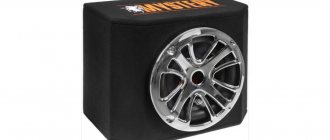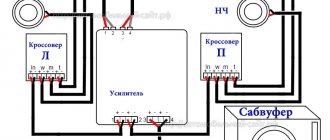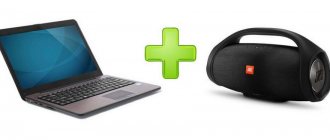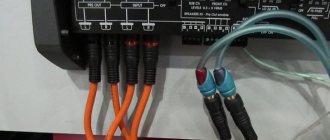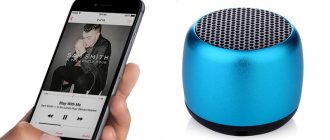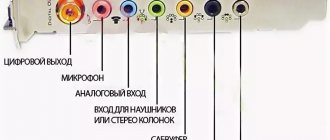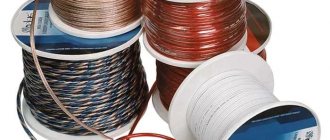Car audio systems rarely use only one full-range speaker. This scheme is used only in exceptional cases, since one loudspeaker gives a satisfactory sound picture, where there are mainly mid frequencies, and the low and high ranges are weak and inexpressive. Component acoustics with two or more acoustic emitters require a crossover.
Typically this is a passive filter using capacitors and inductors that suppresses a certain frequency band. The tweeter limiter attenuates or nearly attenuates all frequencies below 2500 Hz and allows high-frequency content to pass through. The filter, designed to connect the low-frequency head, cuts off frequencies above 150-200 Hz. Thus, the range of reproduced frequencies is divided into two bands designed to work with a specific speaker.
How to connect crossovers to car speakers
A passive separation module is a small board with radio elements. A regular block has 6 pair terminals:
- ULF output
- Twitter connection
- Connecting a subwoofer
Connecting the crossover to the speakers is not difficult. Some models allow you to clamp the wire under a screw, and some are equipped with a terminal block. The terminals where the amplifier output is connected are labeled “Input” or “Amplifier”, the terminals intended for the high-frequency “tweeter” are marked “Tweeter”, and the subwoofer is included in the terminals "Woofer." More complex devices have an additional pair of contacts for the midrange speaker. Thus, the filter divides the audio range into three bands. The diagram for connecting the crossover to the speakers includes the correct wiring inside the car.
Connection instructions
A passive crossover for car audio is connected as follows:
- Speakers are purchased and installed.
- The output wires for the speakers from the radio are connected to the input terminals of the device.
- The speakers are connected using speaker cables to the corresponding terminals of the device, which may be designated Wf (for a full-range speaker), Sw (for a subwoofer), Mw (for a midwoofer) and Tw (for a tweeter).
To simplify setup and connection, car amplifiers with a built-in crossover are selected. The subwoofer, midwoofers and tweeters are connected to the corresponding outputs of the audio device. The switches select the characteristics most suitable for the selected speakers.
Connecting speakers via crossover
To correctly connect crossovers to speakers, you need to observe the polarity, which is indicated for each pair of terminals. To do this, you need to use special cables for speaker systems. Since the wire is clamped under a screw, a stranded copper wire in polyvinyl chloride insulation is used between the limiter and the speaker. Quality cables have polypropylene foam insulation, and the best separator and speaker cables have Teflon insulation.
How crossovers for speakers are connected. Often on forums you can read about oxygen-free or monocrystalline copper, the use of which in speaker cables improves the sound and makes it richer. This is purely a marketing ploy. All differences between ordinary copper and these “prestigious” grades lie beyond human perception and do not have any effect on the sound quality. It is useless to use silver plated copper cables.
How to configure
In order to get the highest quality sound, you need to select the required cutoff frequency. If you use a three-way active crossover (the best option for most acoustic systems), you need to identify two cutoff frequency levels. The first shows the boundary between frequencies such as medium and low, and the second does the same, but for high and medium frequencies.
An important point: every vehicle owner must correctly determine the frequency characteristics of the speakers used before connecting the crossover to the speakers. There is no need to go to these frequencies, since in this case the crossovers will refuse to work normally at them. Ultimately, this will only lead to deterioration in sound and quality. This will also cause a reduction in the life of the equipment and the entire acoustic system in the vehicle.
Connecting speakers via crossover
The cross-section of the conductor is very important when driving speakers through a band-pass filter. It directly depends on the power of the speaker system and the resistance of the dynamic head. If we omit all the calculations, it turns out that for a speaker with a power of 100 watts and a resistance of 4 Ohms, you need a cable with a minimum cross-section of 2.0 mm2. The lower the acoustic resistance, the greater the current will flow in the circuit. When connecting loudspeakers, it is recommended to take a 20% margin over the cable cross-section.
Connecting the crossover to the speakers should only be done with real copper wire. Particularly dangerous when connecting elements of a sound system is the use of cheap cables from some Chinese manufacturers. Instead of copper, they use copper alloy or copper-plated steel. Both are strictly contraindicated in car acoustics. In addition to poor sound quality, there will be uncontrolled heating of the connecting wires, which can lead to dangerous consequences.
Series, parallel and mixed speaker connection
The most important thing when connecting speakers is to make the connection so that neither speaker is overloaded. Overloading threatens to damage the speaker.
It is important to understand that the speaker can be supplied with power either less than or equal to the rated power for which it is, in fact, designed. Otherwise, sooner or later even the highest quality speaker will fail due to overload.
It is clear that before connecting the speakers you need to define them:
Rated power ( W , W );
Active resistance of the voice coil ( Ohm , Ω ).
All this, as a rule, is indicated on the magnetic system of the speaker, or on the basket.
1W means 1W, 4Ω is the resistance of the voice coil.
Speaker brand - 3GDSH-16 . The first number 3 is the rated power, 3 W. Next to it is the signature - 8 Ohm, coil resistance.
Sometimes they don’t indicate it, but you can recognize it by the markings.
Mid-range speaker 15GD-11-120 . Rated power - 15 W, coil resistance - 8Ω.
Speaker connection. Example.
Let's start with the basics, so to speak - clear examples. Let's imagine that we have a 6-watt audio power amplifier (AMP) and 3 speakers. Two 1 W speakers (coil resistance 8 Ω each) and one 4 W speaker (8 Ω). The challenge is to connect all 3 speakers to the amplifier.
First, let's look at an example of these speakers being connected incorrectly. Here is a visual drawing.
As you can see, the resistance of all three speakers is the same and equals 8 Ω. Since this is a parallel connection of speakers, the current will be divided equally between the 3 speakers. At maximum amplifier power (6 W), each speaker will receive 2 W of power. It is clear that 2 out of 3 speakers will be overloaded - those whose rated power is 1 W. It is clear that such a connection scheme is not suitable.
If the amplifier outputted only 3 W of sound power, then such a circuit would be suitable, but a 4 W speaker would not work at full capacity - “filonil”. Although this is not always critical.
Now let's take an example of the correct connection of the same speakers. Let's use the so-called mixed connection (both serial and parallel).
Let's connect two 1-watt speakers in series. As a result, their total resistance will be 16 Ω. Now we connect a 4-watt speaker with a resistance of 8 Ω in parallel to them.
When the amplifier operates at maximum power, the current in the circuit will be divided based on the resistance. Since the resistance of a series circuit of two speakers is 2 times greater (i.e. 16 Ω), the speakers will receive only 2 watts of sound power from the amplifier (1 watt each). But a 4-watt speaker will use 4 watts of power. But it will work according to its rated power. There will be no overload with such a connection. Each speaker will operate normally.
And one more example.
We have a 4-watt audio power amplifier (UMZCH, aka “amplifier”). 4 speakers, the power of each is 1 watt, and the resistance of each is 8 Ω. A load with a resistance of 8 Ω can be connected to the amplifier output. You need to connect the speakers together so that their total resistance is 8 Ω.
How to properly connect the speakers to each other in this case?
Series connection of speakers.
First, let's connect all the speakers in series. What will we get as a result?
Since when connected in series, the resistance of the speakers is added, the result is a composite speaker with a resistance of 32 ohms! It is clear that such a connection scheme will not work. By the way, the same resistance (32 Ω) has the capsule of headphones – popularly called “plugs”.
If we connect such a 32 Ω compound speaker to the 8 ohm output of our amplifier, then due to the high resistance, little current will flow through the speakers. The speakers will sound very quiet. Effective matching between the amplifier and the load (speakers) will not work.
Connecting a crossover to speakers without an amplifier
You can connect speakers via a crossover not only from the output of a low-frequency amplifier, but also from the output of a music center or car radio. It should be taken into account that passive separation systems are made of discrete elements, which is why the sound level will be lower than when working with a low-frequency amplifier. In this case, much will depend on the speakers used. Some models allow high-quality work only as part of a powerful system with good ULF.
In what places is it recommended to install tweeters?
Manufacturers recommend many places to place tweeters, most commonly at ear level. In other words, aim them as high as possible at the listener. But not everyone agrees with this opinion. This installation is not always convenient. It depends on the specific circumstances. And the number of installation options is quite large.
- Corners of mirrors. During the trip they will not cause additional discomfort. Moreover, they will fit beautifully into the interior of the vehicle;
- Dashboard. Installation can even be done using double-sided tape;
- Podiums. There are two options here. The first is to install the tweeters in a standard podium (which comes with the tweeter), the second is to make the podium yourself. The latter case is more complicated, but it guarantees a better result.
Where is the best place to point tweeters?
When designing car audio, you can choose one of two options:
- each tweeter is directed at the listener. That is, the right tweeter is directed at the driver, the left one is also aimed at him;
- Diagonal installation. In other words, the tweeter on the right is routed to the left seat, while the speaker on the left is routed to the right.
The choice of one option or another depends on the individual preferences of the owner. To begin with, you can point the HF speakers towards yourself, and then try the diagonal method. After testing, the owner himself will decide whether to choose the first method or give preference to the second.
How to install crossovers for speakers
To avoid problems with how to connect a crossover for speakers, you need to follow the installation rules. Do not lay power and speaker cables together. This may cause low-frequency interference in the speakers. The same effect is caused by crossing cables. The band limiter is not a device whose operation requires any intervention, so the blocks can be placed in any convenient location. The main thing is that no dust, dirt gets in there and there is no elevated temperature. The blocks do not have a sealed housing, so negative external factors can lead to disruption of internal soldering and failure of the speaker system. It is advisable to tin the ends of the copper cable with a thin layer of solder before clamping it with a screw. This will reduce copper oxidation and the formation of an oxide film. Broken contact between the speaker and the amplifier is especially dangerous. Lack of load leads to breakdown of the output transistors.
Installation
Features of how to connect crossovers to speakers include the following:
- Crossovers, as devices that help create the necessary frequencies and sounds on speakers, are connected to the entire audio system;
- All devices, regardless of the type of operation, have symbols located on stickers. Here, on the stickers located on the back, there are diagrams for connecting the active wires;
- After this, the cover is removed, since under it there are indications of the operation and working elements of the device in the general acoustic system of the vehicle;
- The next step is choosing a suitable installation location.
Why do you need a crossover?
There are several types of devices that are needed to protect speakers from overload with non-reproducible frequencies. The main function of crossovers is to filter the range, which improves sound quality.
Are you a car driver?! Then you can take this simple test and find out. Go to test »
Device
Equipment is selected depending on the number of bands in the speaker system. The design device consists of frequency filters that are designed to work with low and high frequencies. If the amplifier is three-way, it processes more channels and is also able to filter mid frequencies.
Designations of modifications
Among the designations that crossover modifications for vehicles have are the following:
- Input, or entrance. It is to this place that the output of the active amplifier is connected, so it is important not to make a mistake with the polarity here.
- Woofer, or low frequency emitter. A speaker with mid and low frequencies is connected to this place. Separation stripes are indicated in the technical documentation.
- Twitter, or tweeter. A high-frequency speaker is connected to this location.
These are the main points and rules regarding how to connect crossovers to speakers and to the entire sound system of the vehicle.
Differences between active and passive crossovers
To connect to speakers, a passive type of equipment is often used. This type of device does not require additional power supply, therefore it is easy to install and configure. Sound equipment generates part of the energy that is used to clean up the sound. Reactive parts of passive type equipment have a single-phase shift.
The category of active equipment includes a radio or amplifier with developed sound filters. The design consists of coils, capacitors and semiconductors to amplify the power of small equipment. Rarely used as a separate module. Every car audio system has an active filter.
Advantages and disadvantages
Active crossovers
- Convenience during operation;
- The switches are output directly to the housing.
- Too expensive;
- The need for active crossovers in amplifiers for channels;
- The presence of distortions in the work that arise due to the operation of the elements of these devices.
Passive crossovers
- Dividing signals into systems with several bands, and this requires only two amplification channels;
- Low cost.
- Impossibility of configuration without direct intervention in the entire electricity supply circuit;
- Select according to the acoustic system bands used;
- Configuration, selection and installation are processes that require professional knowledge and experience.
Other Features
Today, the most common tweeter option is the electrodynamic system. Structurally, it consists of a housing, a magnet, a coil with a winding, a diaphragm with a membrane, and power wires with terminals. When a signal is applied, current flows in the coil and an electromagnetic field is formed. It interacts with the magnet, mechanical vibrations occur, which are transmitted to the diaphragm. The latter creates acoustic waves, and sound is heard. To increase the efficiency of sound reproduction, the membrane has a specific dome shape.
Car tweeters typically use silk membranes. To obtain additional rigidity, the membrane is impregnated with a special compound. Silk is characterized by its ability to more effectively cope with high loads, temperature changes and dampness.
In the most expensive tweeters, the membrane is made of thin aluminum or titanium. This can only be found on very prestigious speaker systems. They are found quite rarely in a typical car audio system. The cheapest option is a paper membrane.
In addition to the fact that the sound is worse than in the two previous cases, such equipment has an extremely short service life. And this is not surprising, since paper cannot ensure high-quality tweeter performance in conditions of low temperature, high humidity and high load. When the car increases engine speed, an unusual sound may be felt.
Don't forget that you can also set up the tweeter using the radio. Even the cheapest models have the ability to adjust the high frequencies. In particular, mid-price models have a built-in equalizer, which greatly simplifies the task.
After installing the tweeter, you need to configure the audio system, and how to do this, read the article “How to configure a radio.”
What kind of speakers are there?
How to properly connect a VAZ 2106 radio
Today, almost every car has a radio with speakers located in the front and rear and capable of pleasing the owner with decent sound. The market offers a variety of speaker systems that can satisfy the needs of even the most demanding music lovers. One simple option is to purchase a radio complete with speakers. A more difficult way is to correctly select and install acoustics that will match a specific car.
To get truly high-quality sound, you need to find out what types of dynamic heads exist. They are conventionally divided into:
- broadband;
- coaxial;
- component.
Wideband speakers reproduce the entire spectrum of sound frequencies that human hearing can perceive. It is precisely this kind of acoustics that, in most cases, is equipped with cars from the factory today. If you are a lover of good sound, then preference should be given to coaxial dynamic drivers. The set consists of several columns, the installation of which is carried out along one axis. The entire frequency spectrum, divided into low-frequency (LF), mid-frequency (MF) and high-frequency (HF), is reproduced by separate speakers. By dividing and expanding the frequency range, the sound quality can be improved. For lovers of high-quality music with powerful bass, you should consider a component system, which is usually used as front speakers. In addition to different types of acoustic systems, speakers are divided by standard sizes, the choice of which depends on the installation location and the goals pursued.
Acoustic systems are divided into broadband, coaxial and component. You need to give preference to one or another speaker depending on your goals.
What are tweeters used for?
Car audio systems often use tweeters or tweeters. Their main purpose is to reproduce high-frequency sounds. You can purchase the elements either separately or as a set with a multi-component system. In appearance, such devices are small speakers that can improve the sound in a car, making it even louder and more voluminous. They are usually installed at the back or front, which depends on the speaker system circuit used.
Tweeters in a car are designed to reproduce high-frequency sounds, and they are installed in the side pillars of the windshield, doors, and dashboard
What are tweeters and why are they needed?
A horn tweeter is a small speaker capable of reproducing high-frequency sound. A device that allows you to significantly modify the sound of music, creating the effect of the listener’s presence in the hall. Needed in the car to create high quality sound. It often makes no sense to buy separately, since it only works together with simple speakers in the mid-range sound range.
Component Audio Source Locations
The sound quality of coaxial speakers satisfies most motorists, but not all. The design disadvantage of coaxial sound is that high-frequency tweeters are placed in inaccessible places along with the front speakers. To overcome this disadvantage, component systems with speakers spaced apart in space are used.
Due to the layout of car interiors, it is difficult to choose the ideal location for tweeters. The most acceptable compromise between price and quality is to place the low- and mid-frequency speakers in their standard place and move the high-frequency drivers to the dashboard or the A-pillar.
Connecting tweeters
The installation procedure for component speakers is given below:
- With the battery turned off, install the crossovers in a place protected from dust, moisture and vibration.
Connect the crossover filters directly to the output of the radio. Place the wires under the casing. When installing crossovers, make sure that they are reliably protected from dust, moisture and vibration - Connect the tweeters to the crossovers using a temporary circuit without fastening.
- If there are no crossovers, connect the high-frequency speakers in parallel with the main ones through a capacitor connected to the open circuit (do not use an electrolytic one) with a capacity of about 1–1.5 μF.
- Apply power and select the most suitable location for mounting the tweeters, based on sound quality. Disconnect the battery.
- If necessary, drill holes in the panel for tweeters.
If using cabinet speakers, mount them in the chosen location, route the wires and connect them to the crossovers. If you decide to use cabinet speakers, securely attach them to the corners of the dashboard
What you need to connect
Before installing the tweeters, you should decide on the location for their installation. Many modern cars already have slots for such speakers in the interior.
If there are no grooves, you will have to measure the size of the speakers and make niches for their placement yourself, using a template.
Wires for connecting tweeters should have a cross-section from 1.5 to 4 square meters. mm.
The cable length should be sufficient to connect it through the subwoofer and amplifier, especially if the tweeters are included without a crossover (frequency filter). In the latter case, you should also purchase a capacitor separately. Its capacitance should be from 1 to 1.5 µF.
To install tweeters, special tools are used:
- wire cutters;
- screwdriver set;
- gasket rings;
- material for insulation device;
- corrugation made of rubber and plastic;
- speaker cord;
- tape (double-sided);
- drills and drill (preferably portable);
- multimeter
